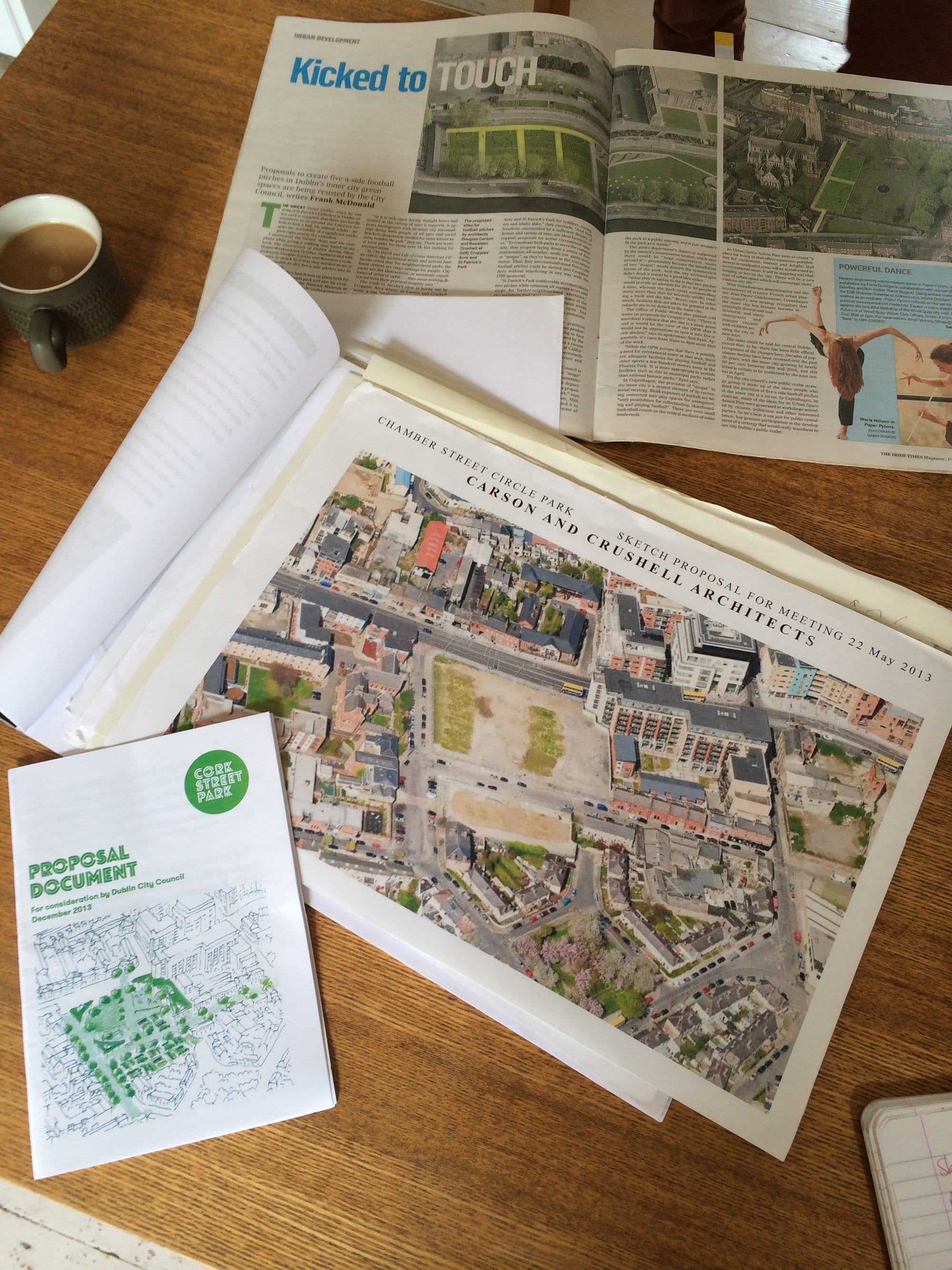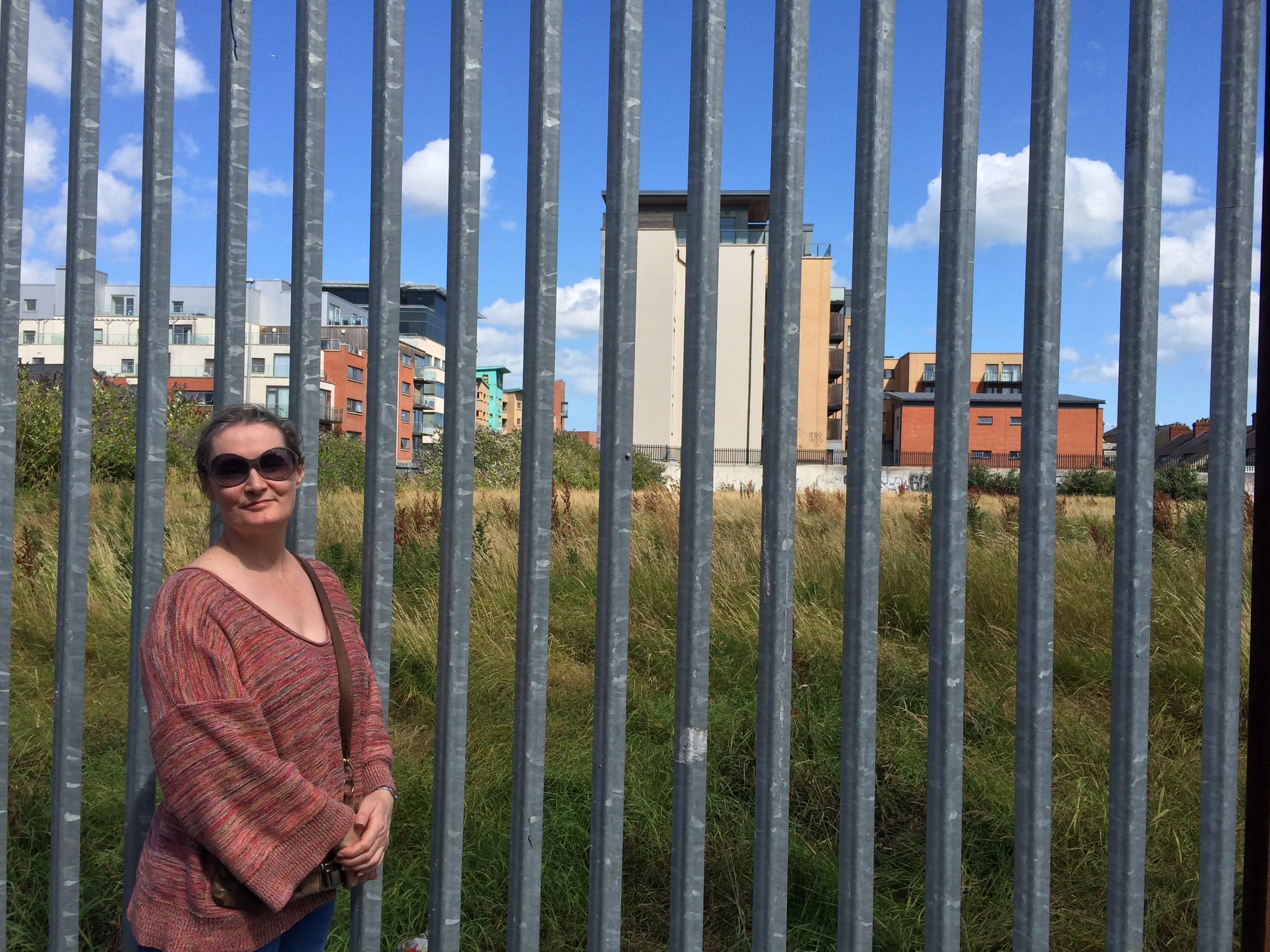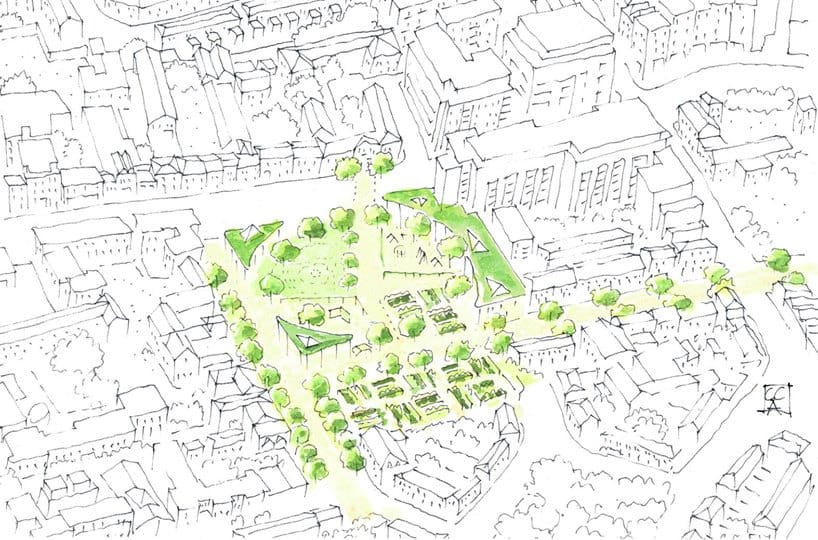From a Dublin base, an anti-caste influencer grows a global audience
In less than two years, Amit Wasnik has attracted tens of thousands of online followers with his posts focused on the life and ideas of BR Ambedkar.
After years of campaigning, a community group has pushed Dublin City Council into turning a vacant lot off Dublin 8’s Cork Street into a park. Digging is set to begin next month.

On a cold October night last year, 100 people met in the Dublin Food Co-op to talk about a derelict site on Cork Street, in Dublin 8 – the site that, in May of next year, will open as a new public park.
It’s been an empty space since November 2008, when the Chamber Street council flats were demolished. Metal fencing has surrounded it since then. From the main-road side, it’s too overgrown to really see the size of it.

That October meeting saw the largest-ever turnout for the Cork Street Park Group, and it showed how far the campaign had come over the years, driven by a mantra that the land belonged to the people; it was ‘Council-controlled’, not ‘Council-owned’.
Going back to the mid-2000s, Sandy Hazel and some other local residents had been talking about the lack of green space in this corner of the city, and the lack of space for kids to play, specifically looking at skate parks with the group, SkateD8.
But the campaign really took shape when, in 2011, Hazel contacted Frank McDonald, who had also been highlighting the city’s shortcomings in this area.
Doug Carson paused for a moment after my first question when I met him last week at the Carson & Crushell home/office. It’s a real architect’s house . . . a ‘work in progress’, as Rosaleen Crushell describes it.
“When did you first get involved?” I asked him.
Pause.
“I’ll get the file,” he said, and came back with a folder that tracked the journey of the Cork Street Park with a mix of rumpled papers and architectural sketches.

A faded 2011 Irish Times Weekend Magazine told a story – ‘Kicked to Touch’, by McDonald – of how Carson and Crushell’s architectural firm had taken up the idea of a multi-use park in the space beside St Patrick’s Cathedral.
It was off their own bat, taking it upon themselves to offer an actual plan to address the points raised by Frank on a 2010 walking tour.
They assessed the St Patrick’s park, offered a design and a brief, but Dublin City Council didn’t bite. So when Hazel called on behalf of the SkateD8 group to ask for advice on creating a space for skaters, McDonald match-made. The Cork Street campaigning began.
“I can’t say a bad word against the city council,” says Hazel, as we walked around the site on a bright but windy bank holiday. “They are great, but getting to the point where you’re sitting around the table talking to them is hard. I don’t know if we’ve had a 100 meetings, but we’ve had a lot. It’s a slow, slow process, but once you get the community on board and it gathers momentum, it gets going.”
When Carson and Hazel first started working, Cork Street was one of the sites they had identified as potential parks, but St Patrick’s had been the first proposal.
“The Council never really says ‘No’,” Carson explained. “But what they might do is point you towards another site.”
When the other site mentioned was the 1.2 acres on the corner of Cork Street and Ormond Street, they thought they were on to something.
Armed with €5,000 in grant money from the Arts Council via Create, which funds community-led projects, the group started raising awareness of their idea.
“There was belief in the project then,” says Hazel. “We got a campaign together with posters, architectural concepts, community-consultation meetings, and a promotional video. The money really went a long way to getting this off the ground.”
But for the next three years, they had no idea whether it would all be for nothing.
In mid-2013, a ‘For Sale’ sign went up – Hazel says that really had them worried. Carson offers a sympathetic interpretation that the council was just testing the value of the land.
The group was galvanized by the idea that the council could sell it off, perhaps putting an end to all their work. At best, a tender could plan for 70 percent development with 30 percent park – unacceptable to the Cork Streeters.
They started a petition. Then they secured some free billboard space.
‘We want a park here’, ‘We need a park here’, the billboards said, directly below ‘For Sale’.
That gave the movement boost, recalls Carson. They started a petition. It brought in 1,181 signatures.
For Hazel, and for much of the group, an important moment was the realisation that the land belongs to the people, not the council.
“People don’t usually see it like that,” says Carson, and it was even a small source of tension with the council, at times. “We used the term ‘council-controlled’, while they preferred ‘council-owned’ . . . it’s a small difference but councillors themselves are elected to manage in our interests, so that includes managing land. People quickly forget that.”

Sandy Hazel at the Cork Street site.
The message became a mantra for the group.
They posted, shared, costed plans and lobbied. They proposed alternative sites, which were rejected. They were knocked back by the Office of Public Works, who had no space for them.
They met with council officials, some of whom told them the ‘skating’ element of their plans would scare away support for a park.
An outdoor-pursuits day was held on the site, by a private company, part of which was a BMX area; the group used it to show how much of an impact a permanent multi-use park could have.
They ‘did the media’, produced a video ‘Love Letter to Tony Flynn’ (the council area manager), and audited green space in the area (13 times less than the neighbouring South East – an open-space “black spot” according to Labour councillor Rebecca Moynihan).
Meetings were held in the Dublin Food Co-op, in mosques, in Twisted Pepper.
Then in October 2013, the council objected to the sale of the site. It unanimously supported the proposal to turn it into a public park, under a motion put forward by Sinn Féin’s Críona Ní Dhálaigh, who is now Lord Mayor of Dublin, and Moynihan.
But still, those in the group who understood local politics knew they couldn’t take anything for granted.

As Hazel explains, it was only earlier this year, after City Manager Owen Keegan had agreed not to dispose of the site, that the council started mentioning dates, and put together a tender for the design of the park.
They had blocked a sale, passed a council motion, got the land re-zoned, and garnered local support. And now they know it is going to happen. Digging starts next month.
“It’s up to the people now,” says Hazel, looking in at the site. “We’ve done all we can to get it to this point, and now people have to tell the council what they want in the space.”
Another public meeting will be held with the council later this month. The final cost for the site will emerge later, with €75,000 having been set aside from a previous budget as funding for ‘recreational facilities’, and reportedly an expected total of around €250,000.
Going back to the first motivations for the campaign, the only element Carson and Hazel are really calling for is that the park is amenable to skaters, but with the other uses you’d associate with a park.
This can simply mean ‘skateable surfaces’: smooth concrete, benches you can slide on, and gardai who don’t throw you out.
“Most of your time as a skater is taken up by being turfed off things,” says Colin Farmer, a long-time skateboarder who has been involved in the campaign since 2011.
“As a local resident, I’d like to see a variety of uses, so an active park rather than an ornamental park. Skateboarding facilities have been lacking in the city for as long as I’ve been involved in that community [since 1989].”
Teenagers are the one group in the community that doesn’t get anything, says Farmer, and they are a group that can cause problems for the community if they don’t have somewhere to blow off steam.
Having seen so much effort by so many, and particularly a large number of young people getting involved in the campaign, Hazel wants that momentum to continue in the area.
“We want more of them,” she tells me. “This is great but it’s not enough. I see a lot of resources going into tourism, and not that much for the people that are living in high-density, high-rise accommodation around here. Really, it’s about quality of life.”
When the campaign started, those involved looked at the high-rise apartments overlooking the site, and the number of new families coming to the area around Cork Street, and the other high-density areas in this postcode. And these facts haven’t changed.
“These children were being told by management companies that they could not play in corridors, they could only do a certain amount of stuff in courtyards, and then there’s the sheltered housing just next to the site,” says Hazel.
“It’s such a waste that the site just hasn’t been used,” she says. And that can go for others in the city.
But the Cork Street project is a source of optimism for everyone who has been involved.
Says Farmer: “I never have had any interaction with the Council before, or campaigning at all really, so it’s been interesting to see that we actually can have an impact on our own surroundings.”